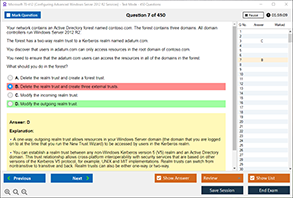Introduction
In today’s digital world, securing mobile devices and operating systems has become a necessity rather than a choice. Cyber threats such as malware, viruses, and phishing attacks continue to evolve, putting sensitive data and user privacy at risk. To combat these threats, security solutions rely on a fundamental technology known as signature files. These files play an essential role in identifying and eliminating malicious software before it can cause harm.
Signature files are used by antivirus programs, intrusion detection systems, and other cybersecurity tools to detect known threats based on unique patterns. Their primary function is to enhance system security by recognizing harmful software and blocking it before it executes. At DumpsQueen Official, we understand the significance of signature files in cybersecurity and how they contribute to the protection of mobile devices and operating systems.
The Role of Signature Files in Cybersecurity
Signature files are an integral part of cybersecurity mechanisms that safeguard mobile devices and operating systems from threats. They contain a database of malware patterns, also known as signatures, that help in recognizing malicious software. When security applications scan a system, they compare files, applications, and network traffic against these signatures to detect and neutralize potential threats.
Without signature files, security applications would struggle to identify harmful software, leaving devices vulnerable to cyberattacks. By continuously updating signature files, security vendors ensure that the latest threats are included in their detection systems, providing users with up-to-date protection.
How Signature Files Work in Antivirus Software
Antivirus programs rely on signature files to identify and eliminate malware. The process begins when a cybersecurity research team discovers a new virus or malware. Once the malware is analyzed, a unique identifier, or signature, is created and added to the signature file database. When an antivirus program scans a system, it checks files and applications against this database. If a match is found, the antivirus takes immediate action to quarantine or remove the threat.
Signature files ensure that antivirus software can detect previously identified threats efficiently. This method is highly effective against known malware but requires frequent updates to remain effective against new threats.
Signature-Based Detection in Intrusion Detection Systems
Apart from antivirus software, intrusion detection systems (IDS) also utilize signature files to monitor network traffic and system behavior. These systems analyze data packets for malicious signatures and alert administrators when suspicious activity is detected.
Signature-based detection is particularly useful in enterprise environments where network security is a top priority. By implementing signature files in IDS, organizations can prevent unauthorized access and protect sensitive data from cybercriminals.
Importance of Signature Files in Mobile Security
Mobile devices are increasingly targeted by cybercriminals due to their widespread use for communication, banking, and personal data storage. Security applications for mobile devices use signature files to scan downloaded files, applications, and internet traffic for potential threats. This ensures that mobile users remain protected from malware and phishing attacks.
Many mobile security solutions integrate signature-based detection with additional security measures such as behavioral analysis and machine learning to provide comprehensive protection. By combining multiple detection methods, security software can enhance its ability to detect both known and emerging threats.
Challenges and Limitations of Signature-Based Security
While signature files are effective in identifying known threats, they have certain limitations. One major drawback is their inability to detect zero-day attacks—new and previously unknown threats that do not yet have a defined signature. Cybercriminals often develop malware that can alter its code to evade detection by signature-based systems, making it difficult for traditional security measures to keep up.
Additionally, signature files require frequent updates to remain effective. If an antivirus or security application is not regularly updated, it may fail to recognize the latest threats, leaving the device vulnerable. To address these challenges, security solutions often incorporate behavioral analysis, artificial intelligence, and real-time threat intelligence alongside signature-based detection.
Enhancing Cybersecurity with Multi-Layered Protection
At DumpsQueen Official, we emphasize the importance of a multi-layered approach to cybersecurity. Relying solely on signature files is not enough to combat modern cyber threats. Advanced security solutions combine signature-based detection with other techniques such as:
-
Behavioral Analysis: Monitors system behavior to detect suspicious activity.
-
Artificial Intelligence and Machine Learning: Uses pattern recognition to identify new threats.
-
Cloud-Based Threat Intelligence: Provides real-time updates and threat analysis to improve security.
By integrating these technologies, cybersecurity solutions can provide comprehensive protection against both known and unknown threats.
Conclusion
Signature files are a crucial component of cybersecurity, playing a key role in detecting and preventing malware attacks on mobile devices and operating systems. They provide a reliable method for identifying known threats, making them a vital part of antivirus programs, intrusion detection systems, and mobile security applications. However, due to their limitations, it is essential to implement additional security measures such as behavioral analysis and artificial intelligence to enhance protection against emerging threats.
At DumpsQueen Official, we recognize the importance of keeping security software up to date with the latest signature files. By adopting a multi-layered security approach, users can safeguard their digital assets and maintain a secure computing environment.
Free Sample Questions
1. What is the primary function of a signature file in cybersecurity?
A) To store user passwords
B) To detect and prevent known malware
C) To increase system speed
D) To improve device battery life
Answer: B) To detect and prevent known malware
2. How do antivirus programs use signature files?
A) By deleting all unknown files automatically
B) By comparing system files against a database of known malware patterns
C) By restricting access to the internet
D) By disabling suspicious applications
Answer: B) By comparing system files against a database of known malware patterns
3. What is one of the main limitations of signature-based security?
A) It increases the cost of software
B) It cannot detect zero-day attacks
C) It slows down mobile devices
D) It removes useful applications
Answer: B) It cannot detect zero-day attacks
4. Why is it important to update signature files regularly?
A) To improve device performance
B) To add new malware definitions and ensure protection against emerging threats
C) To enhance the camera quality
D) To increase internet browsing speed
Answer: B) To add new malware definitions and ensure protection against emerging threats



